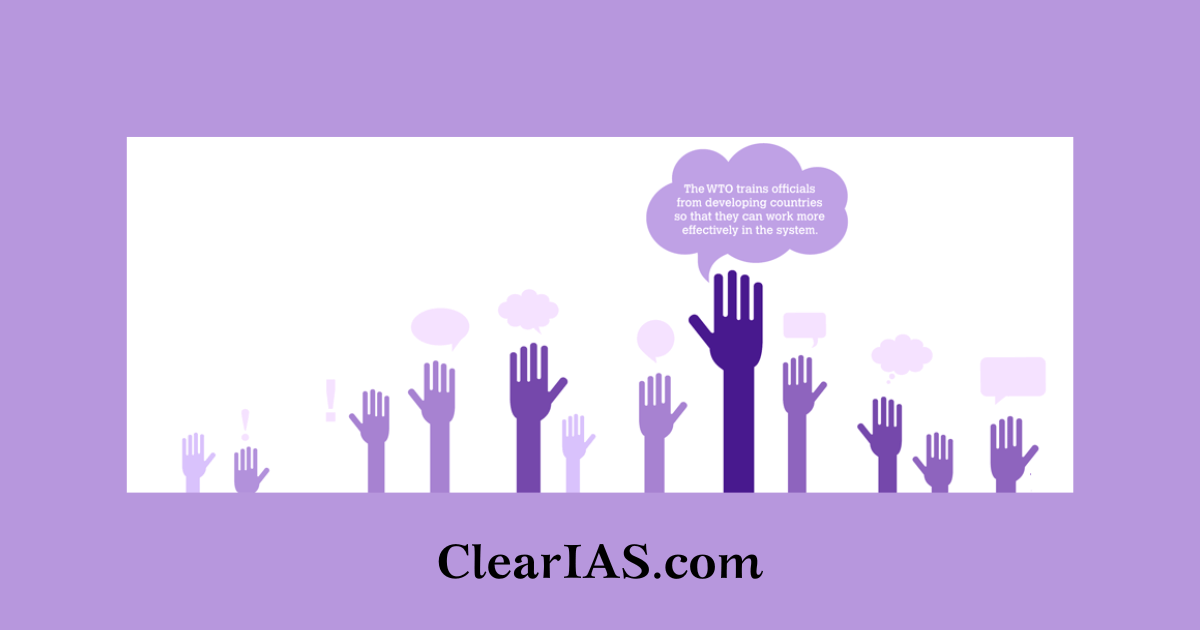
This article explores the relationship between the WTO and developing countries, focusing on key aspects such as trade negotiations, concerns and criticisms, and potential avenues for reform. Read further to learn more.
The World Trade Organization (WTO) is an intergovernmental body that governs and promotes between countries.
The WTO is the largest international economic organization in the world. It has 164 members that account for more than 98% of global commerce and GDP.
Also, the WTO is the only worldwide international body that deals with international trade regulations.
The terms “developed” and “developing” countries are not defined by the WTO. Members declare for themselves whether their countries are “developed” or “developing.”
However, other members have the right to object to a member’s choice to use a provision that is available to developing nations.
The major area of concern among developing countries is agriculture negotiations.
WTO and Developing Countries: Agriculture Negotiations
Agriculture is a matter of International Trade. It has been introduced in the Uruguay round of talks.
Agriculture is the most protected both in North and South. Agricultural negotiations are most politicized in both the North and South.
These negotiations are the major issues in the Doha round of talks.
It is a major area of concern for developing countries as it is the main commodity they export. It is the major export of the forex and generates resources for poverty alleviation.
What is the challenge for WTO and developing nations?
- Developed countries maintain huge subsidies whereas developing countries can afford only nominal subsidies.
- In developing countries, the per capita land holding is very small whereas in developed countries it is very large.
- In developing countries, most of the farmers are subsistence whereas in developed they are commercial.
- Developing countries have unfavorable climatic zones whereas developed countries are in favorable climatic zones.
- In developing countries around 70% of the population depends on agriculture for employment. Whereas in developed countries just three to four percent are dependent on agriculture.
- In developing countries, the average share of GDP is 30% whereas in developed the share is just 3%.
- In developed countries, agriculture is just a matter of Commerce whereas in developing countries it is the way of life.
Also read: Sanitary and Phytosanitary Measures
Doha round of talks
The fourth ministerial conference in 2001 led to the adoption of the Doha development agenda.
This adoption was considered a victory for developing countries. The developed countries adopted the agenda because the Doha talks happened after the 2001 incident. The international community wanted to show that nations are together in the fight against terrorism.
What is the unique feature of the Doha round?
It is not a trade round, it is a development round. Priority was a development over trade. Since agriculture is the main concern of developing countries agriculture is the most important agenda.
At Doha, member countries accepted the principle of special and differential responsibility.
They have accepted in the hope that the Doha talks will be adopted in the framework of the ‘single undertaking’, It means that nothing is accepted until everything is accepted.
In WTO, agricultural negotiations are going on under three pillars
- Market Access
- Export Subsidies
- Domestic Support
The theme of negotiations
- Open and liberalization
- Non-discrimination
- Special and differential responsibilities.
Special and Differential Treatment (S&D): The WTO recognizes the need for special treatment for developing countries through provisions such as Special and Differential Treatment. These provisions acknowledge the developmental needs and capacities of different countries.
Operationalization Challenges: Despite the existence of S&D provisions, operationalizing them effectively remains a challenge. Tailoring trade agreements to accommodate the diverse needs of developing countries requires ongoing efforts.
Issues related to market access
- Market access means reducing barriers. There can be two types of barriers, tariff and non-tariff.
- Developed countries have already lowered their tariff. Developing countries continue to maintain tariffs.
- Even when developed countries have reduced tariffs. It has not been possible for developing countries to increase their export.
- The reason is that developed countries impose non-tariff barriers. For example, sanitary and phytosanitary measures.
- The imposition of anti-dumping duty is also without transparency. Even developing countries use such protectionist measures. For example, India even uses quantitative restrictions.
In the context of market access, there is a lack of consensus over two measures, special safeguard measures and special products.
- Special safeguard measures: Developing countries can trigger tariff walls in case of an import surge.
- Special product: Developing countries can keep some products out of the liberalization.
The products should have a linkage with rural development, employment, and livelihood concern.
However, the problem lies in the number of items. The developing countries want to keep as many items as possible.
- Export subsidy: The matter was resolved in the Nairobi package. In the Nairobi package, the decision to eliminate the subsidies given on the export of Agricultural goods was taken.
- Domestic support: Domestic support is the most controversial issue. The developed countries continue to maintain huge subsidies. Whereas there have been many restrictions on the subsidies given by developing countries.
One of the worst impacts of the WTO policy has been that it adversely impacted not only agriculture which is the backbone of the economy but even food security.
It is the impact of WTO policies on agriculture that agriculture is stagnating and showing negative trends.
Since WTO policies have come into existence the number of farmer’s suicide has increased. The problem of Hunger and malnutrition has become acute. Due to this in India, there has been a surge in left-wing extremism.
Domestic subsidies are classified into 3 boxes
Green box: They are not considered as trade distorting and hence there are no limitations. They are primarily meant for research and development.
Amber box: The subsidies that result in increased production are in the Amber box. They are considered trade-distorting and hence there are limitations on these subsidies. They were primarily used by developing countries.
Blue box: This is a part of the Amber box but is not considered trade distorting because they do not increase the production but rather decrease the production. For example, given for livestock, animal husbandry, etc.
The leaders of the developing countries feel that the developed countries have fooled them. They played with the boxes and shifted their subsidies from the Amber box to the green box.
And developing countries lacked enough expertise to understand the technicalities of such agreements.
How has WTO affected food security?
- The developed countries have surplus production and they want to export food items to the developing countries.
- Developed countries have also opted for an overall cap whereas developing countries have gone for a product-wise option.
- Developed countries can give accumulator subsidies, and they can concentrate the entire amount of two to three crops.
- Developed countries manipulated the price of agricultural produce.
- Developing countries exposed their farmers to price fluctuations in the Global markets.
- To get better prices, the farmers opted for cash crops. There have been limitations on the government in the context of the amounts of subsidies they can give.
- The prices of food items have been manipulated to affect production as well as reach.
- Because of WTO norms, the government cannot release food even when they are getting rotten.
- Developed countries suggest importing cheaper food grains to address food security. They criticize the huge corruption in the PDS system of the developing country.
- They accuse developing countries are procuring the food items to later dump these items in the international market.
Actual performance
In theory, WTO appears to be favorable to developing countries. However, in practice, it has impacted adversely the developing countries.
These so-called equal voting rights have not benefited developing countries because the developed countries use various bargaining tools like green room diplomacy.
WTO dispute settlement body is too costly and hence developing countries cannot afford the use of the body. Some developing countries are too poor to even pay the rent for the office in Geneva.
The mechanism could be employed only by well-off countries.
WTO policies in agriculture have impacted food security in developing countries.
Still, it is important to note that the success of WTO is in the interest of the developing countries subject to the condition they can retain solidarity.
Multilateralism is always better because in a Bilateral Framework, developing countries, especially small countries do not have bargaining power. It is also very important for India.
Only through WTO India can get a favorable trade environment.
Conclusion
The relationship between the WTO and developing countries is dynamic and evolving. While the organization has mechanisms in place to address the unique challenges faced by developing nations, there is recognition that more needs to be done. Balancing the interests of diverse economies within a global trading framework requires ongoing efforts, reforms, and a commitment to inclusivity. As the global economic landscape continues to shift, the role of the WTO in promoting fair and equitable trade for all remains a crucial aspect of international economic governance.
Read: Landlocked Developing Countries (LLDCs)
Article written by Chetna Yadav.






Leave a Reply